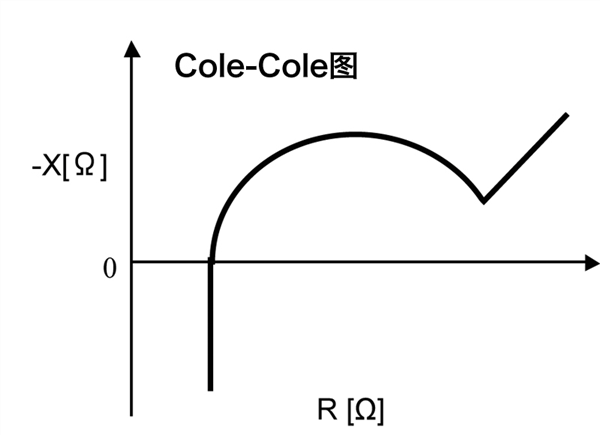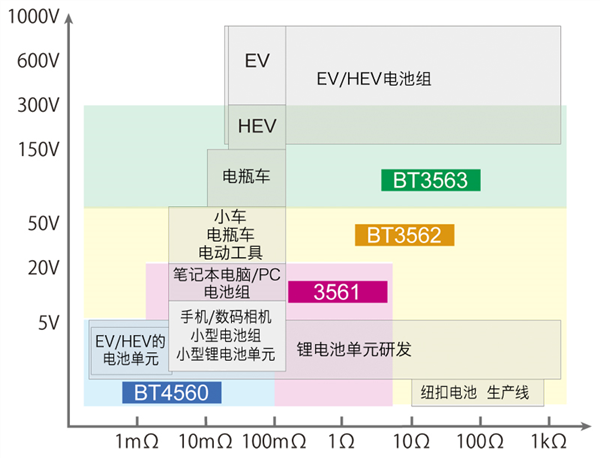Each battery has an internal resistance, and different types of batteries have different internal resistances. The same type of battery has different internal resistance due to inconsistent internal chemical characteristics. The internal resistance of the battery is very small. We usually define it in units of micro-ohms or milliohms. Internal resistance is an important technical indicator for measuring battery performance.
First, the principle of battery internal resistance measurement
Marine Instruments' latest 3561, BT3562, BT3563, BT3555, BT3554 battery testers provide a constant current of 1 kHz for test products, and the internal resistance of the battery is obtained from the voltage value of the AC voltmeter.
As shown in the figure, by using an AC voltmeter to connect the + and - pole AC 4 terminal methods of the battery, the influence of the resistance of the measuring connection line and the contact resistance can be reduced, and the internal resistance of the battery can be accurately measured. It is also possible to measure low resistance such as internal resistance of several mΩ.

Moreover, high-accuracy measurement is required in the DC voltage measurement (OCV) of the battery, which enables high-precision measurement of 0.01% reading.
Since the BT4560 battery impedance analyzer can be changed by setting the measurement frequency other than 1 kHz, the internal resistance can be checked in more detail from the measurement of the Cole-Cole diagram.
In addition, in the DC voltage measurement (OCV) of the battery, the measurement accuracy of 0.0035% of the reading is achieved.
Second, the battery type different internal resistance value and battery voltage value applicable battery tester
The series of battery testers capable of measuring the internal resistance of the battery (IR: Internal Resistant) and the battery voltage (OCV: Open Circuit Voltage) and the applicable battery types are shown in the figure.

Lithium batteries for use in small battery packs for electric vehicles (EVs) or hybrid vehicles or portable devices are suitable for use with the BT4560 battery impedance analyzer or the 3561 battery tester because of their low internal resistance.
Battery state (Li-ion in assembled state) The BT3562 or BT3563 battery tester is used because of high battery voltage (OCV).
In addition, you can measure the internal resistance and battery voltage of rechargeable batteries such as Ni-MH batteries, lead storage batteries, and nickel-cadmium batteries. Please select the battery tester according to the battery voltage (OCV).
Copyright statement: This information belongs to Beijing Ocean Industrial Technology Co., Ltd., if you need to reprint, please indicate the source!
Shijiazhuang Asa Technology Co., Ltd. , https://www.asaantiwrinkle.com